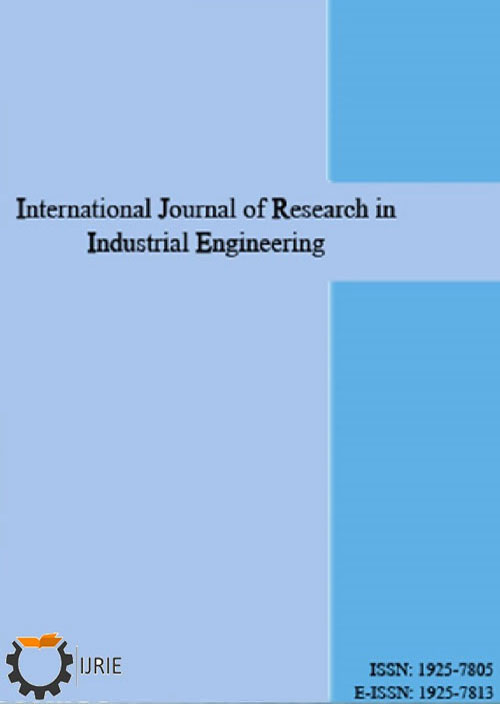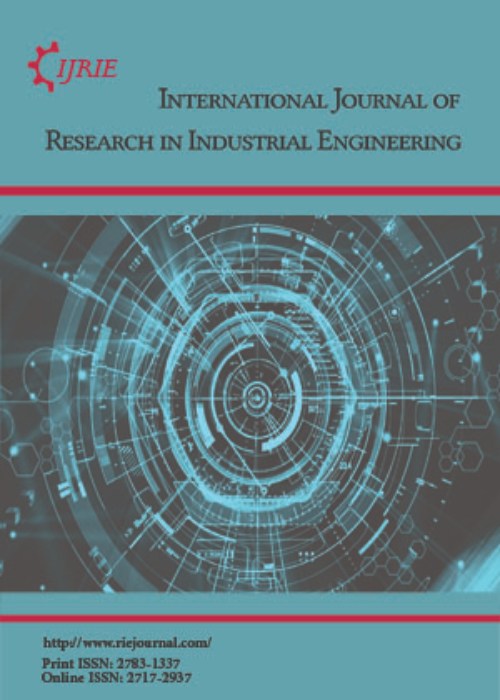فهرست مطالب

International Journal of Research in Industrial Engineering
Volume:9 Issue: 4, Autumn 2020
- تاریخ انتشار: 1399/11/21
- تعداد عناوین: 7
-
-
Pages 304-312
Operating rooms (ORs) are among the most influential departments of a hospital that a major portion of its expenditures and revenues originate from it. Due to the limited resources and the presence of different stockholders, effective management, and the optimal planning of this department are challenging. This paper develops a mathematical model to address the integrated problem of the operating room and surgical member scheduling with the objective of makespan minimization. In the proposed model, several aspects, including the availability and necessity of surgical members and equipment, and lunch break consideration, are incorporated. Finally, a case study related to an OR department in a general hospital is provided to assess the applicability and performance of the proposed model.
Keywords: Operating room, Nurse scheduling, Mathematical Modeling, Lunch break -
Pages 313-317In this Pandemic situation after dealing with contactless delivery, we introduce a "contactless menu", this feature help restaurants to gain the trust and confidence of customers in their safety and hygiene measures post-lockdown. The contactless menu will have two main components and, in the future, we are planning to include contactless payment.Keywords: contactless delivery, QR menu, 3D model
-
Pages 318-327In this research, we present a mathematical model for allocating people to different jobs and shifting employees between related jobs. This action will reduce the repetitive activities workload and ergonomic risks at the planned time horizon, and finally increases the organization's efficiency. In this proposed model, the devices are semi-automatic and it is possible to allocated more than one task to one person. Regarding the modeling and the case study of the constraints, it is shown that the complexity of this problem type is NP-Hard, and the result of accurate methods for solving the problem is not possible in a reasonable time. Due to this Simulated Annealing (SA) algorithm is used to study the proposed model and comparison of the results of SA algorithm with the results of precise optimization methods shows the better performance of the Simulated Annealing algorithm in terms of the time and answer quality.Keywords: Job Rotation, Mathematical Modeling, physical injuries, Simulated Annealing Algorithm
-
Pages 328-336Osteoarthritis (OA) of the hip is the most common joint disease in elderly people and associated with significant physical disability. Pain relief is a primary treatment of hip OA. When the patient with hip OA has failed medical treatment modalities and remains in pain, the patient should be referred for hip replacement surgery in which the damaged surfaces of the joint is removed and replaced with a set of artificial ball-and-socket implants. In this research, a proposition for Additive Manufacturing (AM) is advocated to produce the bone implant to enhance the customer satisfaction along with minimization of costs. AM primarily differs from traditional material removal process because it creates product by successive deposits of material layer by layer. Because of this difference, the cost and operational methodologies are distinct from traditional manufacturing. For this reason, additive manufacturing is adopted for this artificial bone manufacturing and a stochastic optimization model is proposed to help a manufacturer decide when AM is best for them.Keywords: Biomedical implants, Additive Manufacturing, Supply chain, Cost analysis, stochastic programming model
-
Pages 337-348Recommendation based systems can be used for recommending different web page, books, restaurants, tv shows, movies etc. The aim of movie recommendation system is to recommend movies to different users based on their interests. This helps the user to save time browsing the internet looking for movies from the thousand already existing ones. Content-based recommendation system describes the items that may be recommended to the user. Based on a data set, it predicts what movies a user will like considering the attributes present in the previously liked movies. Recommendation systems can recommend movies based on one or a combination of two or more attributes. While designing a movie recommendation system various factors are considered such as the genre of the movie, the director or the actors present in it. In this paper, the recommendation system has been built on cast, keywords, crew, and genres. A single column is created which will be the sum of all the 4 attributes, and it acts as a dominant factor for this movie recommender system.Keywords: Content based recommendation, PyCharm, Python, Machine Learning, web application
-
Pages 349-363The development of a product demands numbers of consideration and customer-based product dominates the present market. This study aims to formulate a customer-oriented product and investigate the optimum design parameters level for this formulation. The customer-oriented product named 'CNC PCB Plotter' – is proposed as a handy tool to make a single PCB within a short time and cost. In the sophisticated art of product design, the desires of the customer should be the only constraint. With this in mind, an organized approach is conducted to formulate the product. Suitable design parameters with their optimum ranges provide the sustainability of the product. Response Surface Methodology (RSM) is applied to determine the optimum level of design parameters. A 2-level 3 factorial Central Composite Design (CCD) provides the experimental trails. This research involves the customer demand and specifies the design parameter, such as cutting speed, feed rate, and depth of cut. The average dimensional accuracy is taken as a response and found 0.027 µm with a combination of cutting speed 53.676 m/min, feed rate 253.272 mm/min, and depth of cut 0.49.mm, which is found to be the optimum value.Keywords: CNC PCB Plotter, RSM, CCD, Customer-oriented product
-
The impact of passenger's traffic on exchange rate and economic growth in Nigerian aviation industryPages 364-378The aim of this study is to examine the impact of passengers’ traffic on Exchange Rate (ER) and economic growth in Nigerian aviation industry. This study adopts an ex-post facto research design, a systematic empirical inquiry in order to carry out the research. Secondary data was obtained from the Federal Airports Authority of Nigeria (FAAN) and National Bureau of Statistics (NBS). The study employed trend analysis on the time series data and regression analysis to explore the cause-and-effect relationship among variables. The result showed that the trend of exchange rate and aviation contribution to Gross Domestic Product (GDP) have been on increase over certain periods. Hence, the linear trend line shows a steady increase in the pattern of exchange rate and economic growth over the sample period of 2000 to 2020 with R-squared values of 0.714 and 0.824, respectively indicating a good fit of the line to the data. The regression analysis revealed that Passengers’ Traffic (PT) has a positive impact on ER and economic growth. Thus, with a T-statistic of 3.296 and probability of 0.004, it indicates a statistically significant effect on the dependent variable (i.e. Exchange Rate). Also, with a T-statistic of 6.119 and probability of 0.000, it indicates a statistically significant impact on the dependent variable (i.e. Economic Growth).Keywords: Passengers’ Traffic, Exchange rate, Economic Growth, Aviation industry


